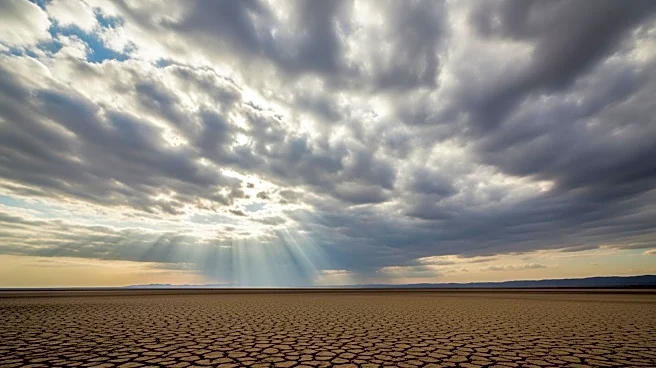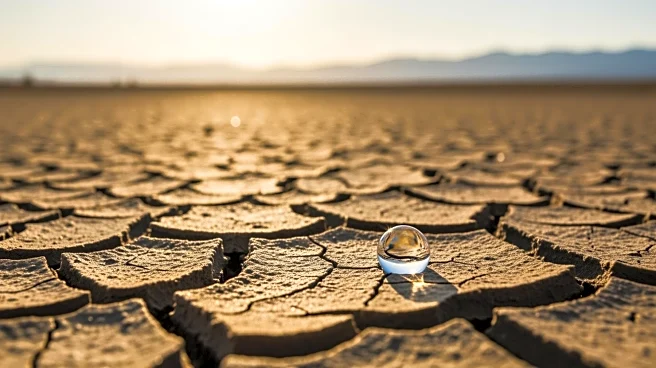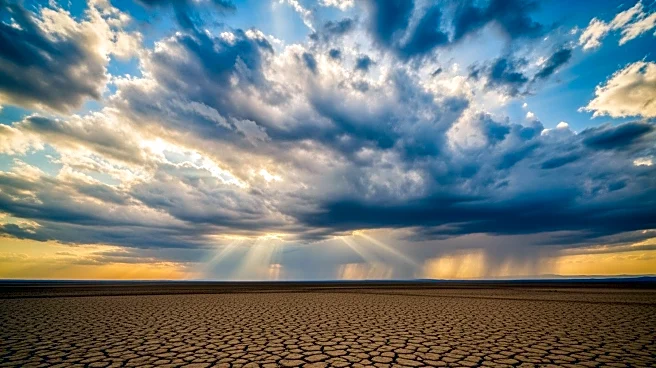What's Happening?
Iran is facing its worst drought in decades, prompting the government to initiate a cloud-seeding operation to stimulate rainfall. The drought has led to critically low water levels in reservoirs, with
Tehran receiving minimal rainfall this year. The cloud-seeding program involves dispersing seeding agents from aircraft and ground generators, aiming to increase precipitation during the rainy season. However, experts caution that cloud seeding may only provide modest benefits, as the technique requires clouds with sufficient moisture, which are scarce in Iran's arid climate. The drought is attributed to climate change and poor water management, including overexpansion of agriculture and depletion of groundwater resources.
Why It's Important?
The drought in Iran poses significant challenges for the country's water security and agricultural productivity. With Tehran potentially facing evacuation due to water shortages, the situation underscores the urgent need for effective water management strategies. Cloud seeding, while offering some relief, is unlikely to resolve the crisis entirely. The drought highlights the broader impacts of climate change on water resources, necessitating international cooperation and innovative solutions to address water scarcity. Iran's efforts to manage the drought could influence regional water policies and prompt discussions on sustainable agricultural practices.
What's Next?
Iran's cloud-seeding operation will continue through the rainy season, with authorities monitoring its effectiveness. The government may implement additional measures, such as water conservation initiatives and penalties for excessive consumption. International collaboration on water management and climate adaptation could play a role in addressing the crisis. As the situation evolves, Iran may explore alternative technologies and policies to enhance water security and mitigate the impacts of climate change.
Beyond the Headlines
The use of cloud seeding in Iran raises questions about the ethical and environmental implications of geoengineering. While it offers a potential solution to water scarcity, the technique's effectiveness and long-term impacts remain uncertain. The situation also highlights the need for comprehensive climate policies that address both mitigation and adaptation, emphasizing the importance of sustainable resource management in the face of environmental challenges.











